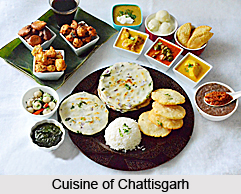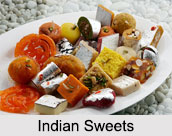 `Dwarik`s` sweet shop was set up in 1885. Then it had the facia `Dwarik Nath Ghosh`. In 1925, it was named as `Dwarik Ghosh & Sons Ltd.` in 1948, the shop was rechristened as `Dwarik Sweets (India) Ltd.` Finally in 1955, the name became `Dwarik Grand Sons.` The very name contains the essence and tradition of the shop, which has served the palates of the connoisseurs of sweets in Calcutta for three generations. In 1987 the legacy has passed over to the fourth generation. `Dwarik`s` is an institution in itself and today it not only bakes itself in its past glory but is ever alert in maintaining and improving its established standards.
`Dwarik`s` sweet shop was set up in 1885. Then it had the facia `Dwarik Nath Ghosh`. In 1925, it was named as `Dwarik Ghosh & Sons Ltd.` in 1948, the shop was rechristened as `Dwarik Sweets (India) Ltd.` Finally in 1955, the name became `Dwarik Grand Sons.` The very name contains the essence and tradition of the shop, which has served the palates of the connoisseurs of sweets in Calcutta for three generations. In 1987 the legacy has passed over to the fourth generation. `Dwarik`s` is an institution in itself and today it not only bakes itself in its past glory but is ever alert in maintaining and improving its established standards.
`Dwarik` is not only famous for its sweetmeats but for salty food as well. At first the shop was founded at 77, Shyama Pukur Street. Initially, the shop used to sell `Pera` and `Borfi` made of thickened milk as well as `Danadar`, a granulated sweetmeat and curd. Sandesh was not that favourite and the specimen available was a grinded sweetmeat which did not go down well with the masses. In 1925, Dwarik Ghosh founded the second shop at the age of sixty. This shop no longer exists in Shyambazar. It was abolished while the Central Avenue was under construction.
The sweets of Dwarik are exquisite in taste. He did not introduce any new sweetmeat in the list of existing sweets. So it may be assumed that his popularity and fame was due to the superior quality and finesse in the making of the sweets which were prevailing then. It is a known fact that the same sweet has varied tastes at different shops. The taste varies on several grounds viz. purity, superiority and ingredients like milk, posset, sugar etc. Besides, grinding them properly also made them more palatable than those, which were less grinded. One can get an idea of this not so simple process from the stupendous arrangement as in Dwarik`s. According to an estimate of 1938, `Ghee` was purchased at no less than Rs.2 lakhs per annum for Dwarik`s. Milk worth Rs.2.5 lakhs, Rs.1.5 lakhs of sugar and casein worth Rs.75,000 were also purchased every year. Au least, 15 mounds of flour were purchased everyday. It goes without saying that Dwarik and his descendents have never compromised with the quality of their sweets. With the aforesaid raw materials, their yearly turnover was Rs.9 lakhs.
During the last phase of the twenties, Dwarik`s shop assumed a new furnished look. Tables and chairs were placed inside the shop for the convenience of the customers. The cups and dishes served to the customers had the name of the shop emblazoned on them. Before this, the customers who thronged the shop, had to stand and eat and the place looked slovenly.
Although `Dwarik`, was not famous for any special sweet or dessert, it had attained excellence in all its sweets. The `Ice-Cream Sandesh` and `Ice-Cream Sarbat` at `Dwariks` were indeed mouth-watering. Their ingredients were thickened milk, ice, vanilla essence, syrup etc. Now a days, the same item is being sold at various places and is called `milk-shake`.




















